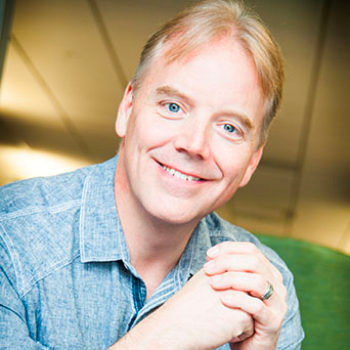The digital infrastructure industry builds the digital engines that power the globe. We enable the internet of everything. There isn’t a single part of the world where digital infrastructure isn’t present in some form. It also continues to grow at an unprecedented rate. This growth increased the visibility of our industry and with it raised a number of questions that no one could definitely answer. What is digital infrastructure? What does it include? How big is it? These questions have persisted for more than a decade.
Over the last year, I worked with the iMasons Sustainability Committee, and other industry leaders to align on the following definitions.
Digital infrastructure is a collection of data centers that provide electronic services to people and machines. Data Centers are real estate locations that house IT equipment to process, store and transmit data. Data centers are classified into three primary categories – Providers, Networks and Crypto.
This classification allowed us to quantify the size of the industry and establish a starting line. In 2021 there were 7 million data centers globally with over 100 GW of built capacity consuming 594TWhs of energy representing 2.4% of global energy draw. An additional 20 GW of new capacity is forecasted to be in place by the end of 2025 primarily across developing markets such as India, LATAM and Africa.
This was a critical step for us to be able to answer the next big question in support of the newly established, iMasons Climate Accord. What is the carbon footprint of digital infrastructure?
Today, we do not know the carbon footprint of digital infrastructure. Measuring the carbon footprint of digital infrastructure is a much bigger challenge as there is no standardized methodology that can quantify the embodied carbon in built capacity or the carbon intensity associated with energy consumption at these data centers. For us to establish this carbon footprint baseline we must first align on what we are measuring. That is why we needed to define and quantify digital infrastructure. The 7 million data centers around the world have a unique real estate address, a distinct combination of materials and products within them, and individual measures of the power consumed by the data center and carbon intensity of the source energy that supplies it. That means we can model these elements at each data center location to establish the carbon footprint baseline. Then we show how the carbon footprint changes over time as these elements change.
To be clear, we are not starting from scratch. Many of the largest companies in the world have been tracking their own carbon footprints for years. Technology firms, product companies and providers in our own industry are no exception. They have established ambitious goals to achieve carbon neutrality in this decade and net zero emissions soon after. Moreover, iMasons members and their companies have not only committed to do their part, they have put it into action. These focused goals and corresponding investments provide critical leadership. Each company is making good progress individually but the sobering reality is that these independent efforts won’t move the needle fast enough.
This was the impetus for us to assemble the iMasons Advisory Council to address this challenge. If we came together as an industry, could we compound the work of these companies? Could we help shorten the timeline to reach these goals?
The iMasons Climate Accord was established to unite companies in the digital infrastructure industry on measuring carbon in materials, products and power. We are focused on shortening the timeframe to achieve carbon neutrality as a first step towards Net Zero.
To my knowledge, this is the largest and first-of-its-kind initiative for our industry that has united so many companies on sustainability goals and methods to achieve them. What better way to compound the work of our members and partners than to have everyone united on one program?
The iMasons Climate Accord is a group of companies who are agreeing to an open standard and governance to report the carbon footprint in materials, products and power across digital infrastructure and to develop a maturity model to measure progress. The climate accord will apply standard carbon labels to products to actively measure embodied carbon over the lifetime of those products. They will also apply carbon labels to data center buildings that report the sum of embodied carbon in materials to build that building and all products housed in that data centers over its life. Finally, the accord will report the carbon intensity of source power used in those data centers. With this structure and reporting we can enable global carbon accounting of digital infrastructure.
If you can measure it, you can improve it. Just like PUE dramatically reduced the forecasted increase of power consumption in data centers, the iMasons Climate Accord will allow all of us to see the baseline of carbon and double down on the efforts to drive to carbon neutrality.
Editor’s Note: The iMasons Climate Accord will host a special 2 hour pre-conference workshop “Decarbonizing Data Center Power” at the Net Zero Forum on Monday September 12 that is free for Forum attendees. A limited number of tickets for the Forum are available HERE
Visit here for more information on the iMasons Climate Accord (ICA)
 Dean Nelson is the Founder and Chairman of Infrastructure Masons, a professional association of industry executives and technology professionals entrusted with building and operating the physical and logical structures of the Digital Age. Since its founding in 2016 iMasons has amassed a global membership representing over $150Bn in infrastructure projects spanning 130 countries. Dean is currently serving as CEO at Cato. Throughout his 30 year career, Dean he has driven $10B in infrastructure projects across 3 continents. His extensive architecture, engineering and operations experience includes 30 years in Hardware, 23 years in Network, and 18 years in Data Centers and Infrastructure Software. He has produced numerous award-winning innovations in mission-critical facilities and compute environments. He also holds four US patents.
Dean Nelson is the Founder and Chairman of Infrastructure Masons, a professional association of industry executives and technology professionals entrusted with building and operating the physical and logical structures of the Digital Age. Since its founding in 2016 iMasons has amassed a global membership representing over $150Bn in infrastructure projects spanning 130 countries. Dean is currently serving as CEO at Cato. Throughout his 30 year career, Dean he has driven $10B in infrastructure projects across 3 continents. His extensive architecture, engineering and operations experience includes 30 years in Hardware, 23 years in Network, and 18 years in Data Centers and Infrastructure Software. He has produced numerous award-winning innovations in mission-critical facilities and compute environments. He also holds four US patents.
NULL




